|
Stoke Road Part II , Blisworth, Northamptonshire, UK. All pictures are presented at relatively low resolution. Printed below each image is the photographer's name, if known. |
|
|
Back to INDEX page Part I This is Part II |
|
|
30-11 This is the oldest building of the Westley's group built in stone, building 1 in the map below - not visible in the view from near the twin cottages. This photograph was probably taken in c. 1930. It was located on the other side of a drive to Blisworth House, that is opposite Lodge Cottage. |
|
|
30-12 By approx. 1938 the building was derelict and was pulled down by the council. This is building number 1 in the map below. This T-shaped building is shown on the 1727 Grafton survey maps.
|
|
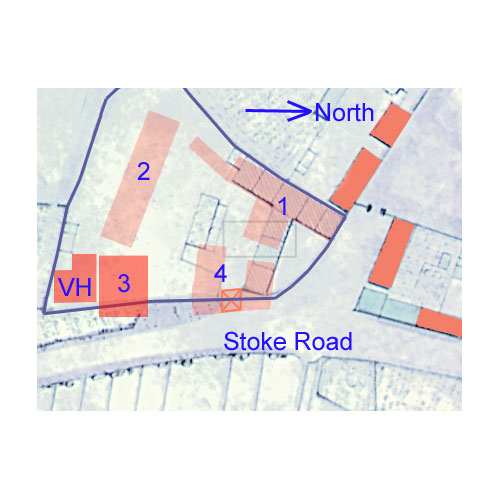 |
30-13 This diagram is to show the changes since about 1840 that have occurred due to modernisation. The blue enclosure marks the freehold of Ann Westley in 1839. It was part of the Grafton Estate in 1812, referred to as "House, yard and garden". Buildings 1 and 2 are the oldest built in stone that were demolished in 1939. Building 4, in brick, was also demolished by the council at about the same time. The buildings drawn in darker colour are those present today - VH is Victoria House and building 3 is its very close neighbour, both in brick. The horizontally oriented rectangle is the location of the new doctor's surgery which was created by converting in c. 1975 a private bungalow built in c. 1955. Other buildings were present in 1839 but presumably lost in the subsequent building operations.
|
| 30-14 Showing a part of Victoria House and the adjacent house (building 3 in the plan). | |
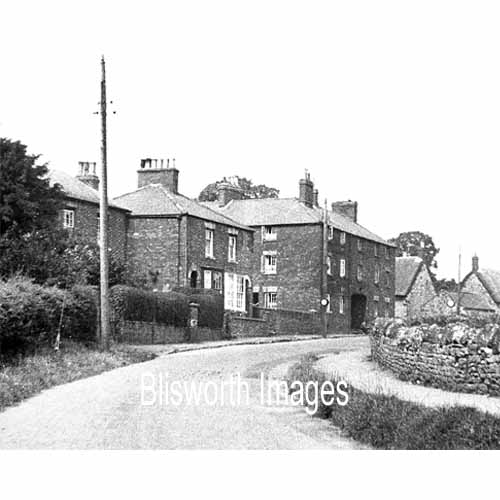 |
30-15a The Westley
Buildings in the 1930s. The two buildings on the left are also
shown in the picture above. Note the low ceilings, as evident from
the positions of windows, and the austere entrance of the main
block. Victoria house is believed to have been built quite early
c.1840 as a home for Ann Westley, the miller.
For a closer view of the main entrance - please click here. |
| 30-15 The doctor's surgery, at first a bungalow with a small extension but in 2000 it was extended with a second floor for admin. staff and storage as seen here. This freed space on the ground floor for more consulting rooms. | |
| 30-16 & 17 The well located near to the ironstone brake drum. Water was obtained by a bucket that was lowered and raised using a long pole. This was used by families in the Westley Buildings until they moved into council houses elsewhere in the village, notably on the Courteenhall Road. Provision for water was not satisfactory at some of the new houses - a point that was particularly annoying as it was said "the drum well contained the best water in the village". | |
|
30-18 Twin cottages (The Green) on the Stoke Road. See also Misc Places for an Alexander picture of this scene. The cottages are listed.
|
|
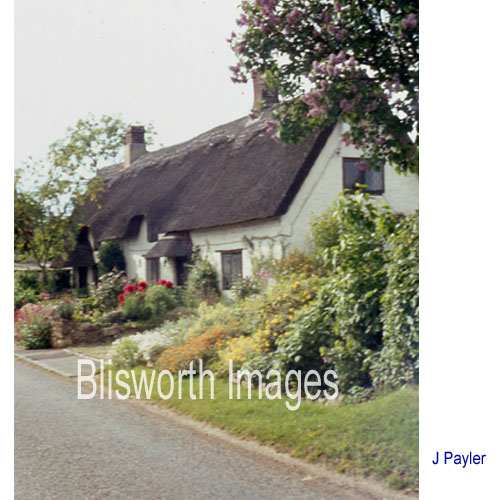 |
30-19 A more recent picture at The Green. The Green was originally a 1 acre grass common which was destroyed when the canal cutting was dug out. |
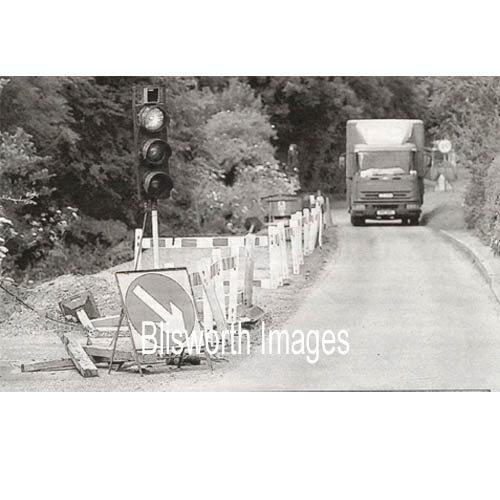 |
The section of Stoke Road between the above mentioned cottages and the Stoneworks farm runs along the side of the deep excavation for the canal. It became obvious that the ground was too unstable and the edge of the road become 'challenged'. In the summer of 2000 the road was narrowed as shown and, finally after a good deal of legal wangling with British Waterways, work to stabilise the road using large steel cages full of rocks, was completed in the summer of 2002. Although the date of this photograph is not known, it is obvious that a distinct width of grass border has been lost over the years. Image 30-18 also shows a wide grass border opposite the cottages. In 2008 the area is being revisited in order that a safety barrier be installed.
|
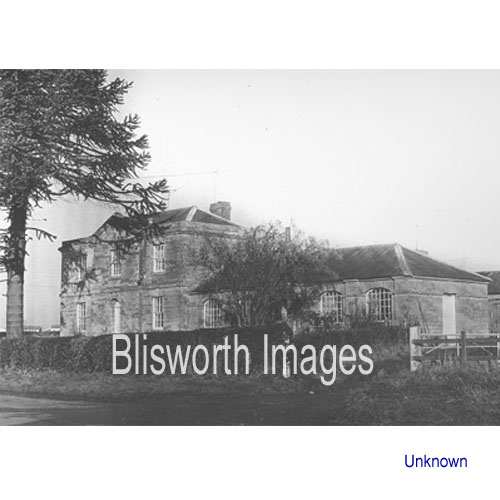 |
30-20 The Blisworth Stoneworks house built in c. 1840 as offices for the large quarry in the fields behind - see also the next picture. The farm house and a barn behind it are listed buildings.
|
|
..
What happened next is less clear. The 1841 census shows that two builders Richard Dunkley and George Wills (portrait from Gail Kae shown in inset) and quite a number of labourers were counted as living at the "Works" house. There were 43 people; apart from the Wills and Dunkley families, six or so lodgers and five servants, there were the families: Townsend (labourers), Mayo (labourers), Gudgeon (farmer), Henson (builder) and Haymaker (labourers). One can surmise that some were actually building the house at that time. Dunkley was 30 at the time,15 years junior to Wills, but clearly had made a mark in the area by building the Railway Arch. One wonders whether Wills was Dunkley's mentor sometime earlier. It is also a strong probability that George Wills, originally from Stony-Stratford, was foreman at the quarry from 1837 onwards. Indeed, the skills of George Wills may have been familiar to the Duke of Grafton many years earlier when Wills was living in Tottenham Court Road, London, presumably building some fashionable town houses only a quarter mile from Grafton's Euston House. At some point Grafton became the Wills's patron. This was all surmised from Gail Kae's researches. Richard Dunkley moved on to build the Station Hotel for Mr. Shaw of Northampton and The Loundes next to the hotel for himself. By the time of the 1851 census George Wills was still at the Works. Dunkley was counted as living in Blisworth but the precise house cannot be discerned. In the 1861 census no-one was apparently permanently living at the Stone Works. George Wills had died in July 1857 but his stone-mason business lived on; George left his business in Stony Stratford to his son Jabez Wills and his business in Northampton to son-in-law William Slaymaker. After William sold his share of the business to Jabez, before emigrating to America in 1870, Jabez and his later descendants, Frederick and Frederick Jnr., kept the family stone masonry business going into the 1980s. It is thought that the business, 1970-80, was involved in work at the Houses of Parliament.
|
|
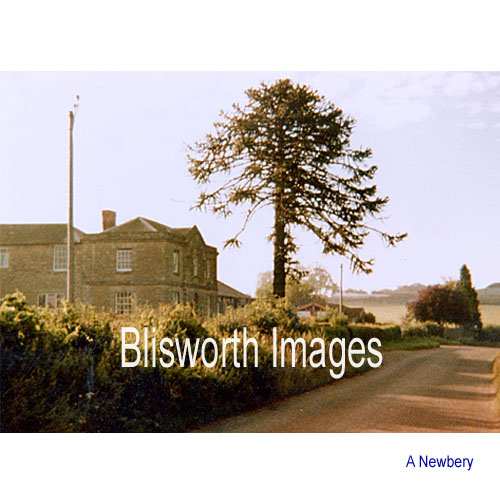 |
30-25 The monkey puzzle tree by the Stone Works house in 1981. It appears to be fading in vitality. The provision of cement during the repairs to the canal tunnel put an end to the tree. It was a sad story - one load of cement powder being delivered was squirted into the already full silo on the building site across the road, rather than the empty one, and the safety relief valve, in turn, squirted a cloud of powder over the tree and the buildings. This excess of lime sealed the pores through which the tree lived and brought it to a sorry state within a few years. |
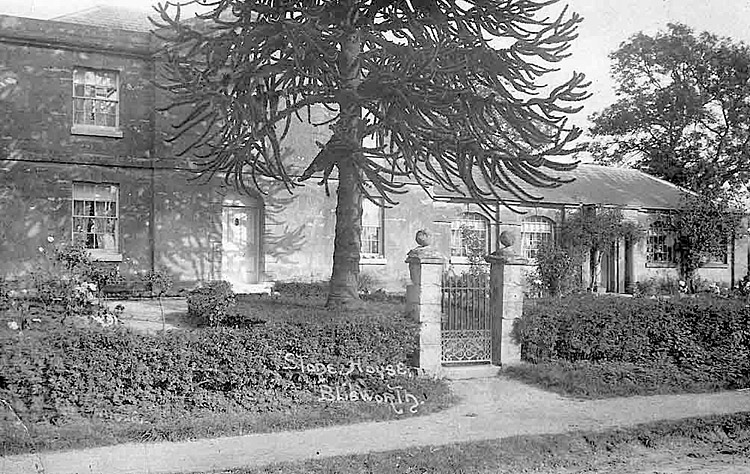
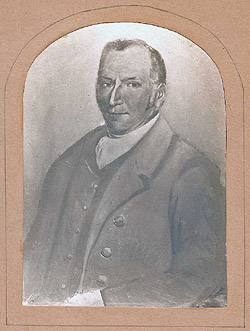 As
As